The region has always been the land of invasions,that is why all the middle age buildings here, even churches and monasteries, are built to withstand the conditions of a sudden siege. People here are open and kind, always willing to help a traveler . Contrast in landscape is really impressive – some mountains reach 5000 meters in height.
Day 1. Arrival
Arrival at the Tbilisi International Airport. Transfer to the hotel. Time at leisure.
Walk along Rustaveli Avenue. In order to learn more about Tbilisi and be able to touch its traditions, you need to take a walk along Shota Rustaveli Avenue. The avenue is a combination of old and modern buildings, art galleries, exhibition halls, theatres, malls, cafes, restaurants and gift shops. Shady plane trees, monuments to prominent Georgians, front facades with stucco, bronze men, streets running up – all this is the central Rustaveli Avenue.
Overnigt in Tbilisi
Day 2 . Tbilisi – Mtskheta - Korsha
Departure to Mtskheta. The oldest city-reserve, whose age is about 4000 years, is considered the Second Jerusalem, a museum of Christian culture. In a small area between small streets, it keeps a lot of saints and places of worship. Mtskheta is actually the heart of Georgian civilization, the capital of Georgia before the founding of Tbilisi.
Visit to the Jvari monastery – Georgian monastery and temple of the 7th century, one of the masterpieces of architecture for the perfection of architectural forms and the first World Heritage Site in Georgia. Jvari (lit. “cross”) is located on the top of a mountain at the confluence of the Kura and Aragvi near Mtskheta – where, according to historical sources (“Conversion of Georgia”, “Life of the Kartli kings”), St. Nino erected a cross. Jvari Monastery is included in the UNESCO World Heritage List.
Visit to the Svetitskhoveli – The temple, with some changes that has survived to this day, was built at the beginning of the 11th century. It is one of the greatest cathedrals. The ancient shrine and spiritual center of Georgia was built on the site of previous churches, the walls of which were not completely destroyed and were preserved as architectural elements. Svetitskhoveli keeps the most important Orthodox relics: the chiton of the Lord, the font of King Mirian, a particle of the relics of the Apostle Andrew the First-Called, the robe of the prophet Elia, the relics of the holy Georgian kings. Svetitskhoveli Temple is included in the UNESCO World Heritage List.
Visit to the Samtavro Monastery. The history of the monastery begins in the 4th century and is associated with St. Nino, one of the most revered saints in Georgia. After arriving in Mtskheta, St. Nino found a secluded place near the northern border of Mtskheta, where she settled in a hut in blackberry bushes (which has survived to this day) and continued her sermon. Samtavro is especially revered by believers, since there are Christian shrines here – The icon of the Iviron Mother of God, the relics of King Mirian and Queen Nana, the relics of St. Shio Mgvimeli and of Elder Gabriel Urgebadze. Samtavro Monastery is included in the UNESCO World Heritage List.
Continuation of the road towards Khevsureti, which delights every visitor with its inviolable nature and mysterious views. This region of Georgia has an ancient history. Arriving here, you find yourself in a majestic country where peace reigns, where every person is a phenomenon, and his birth is an event, where nature is pure and beautiful, and people are wise and kind, who still observe the customs and traditions of their great-grandfathers. This route will interest, first of all, nature lovers and adventurers; this is an amazing opportunity to be in untouched mountainous areas.
Overnigt in Korsha
Day 3. Korsha – Roshka -Abudelauri lakes - Korsha
Departure for Roshka. The village is located at an altitude of 2000m, in a picturesque place in a valley of pristine natural beauty and mythical huge stones left after the course of an ancient glacier. On the horizon above the village rises the rocky massif of Chaukhi. Those who wish can take a horse ride on a real Khevsur horse.
The culmination of the tour will be a trekking trip to the colored lakes of Abudelauri – these are three high-mountain glacial lakes located on the southern slope of the Caucasus Range. The name of the lakes comes from the glacier of the same name, where the mountain river Abudelauri originates.
Abudelauri lakes are also called “colored” lakes. This name was given to them due to the color of the water: Blue, Green and White lakes. The distance between the lakes is 1.5 kilometers.
Green Lake is the shallowest of all lakes, the water in it is bright green. In fact, the water is of course ordinary. This effect creates a reflection of lush greenery on the shore.
Blue lake is considered the most beautiful, the water in it is dark blue. This lake stands out among others with thickets of rhododendrons growing around it. During the period of low water, a rocky ridge appears on the lake, which divides the lake into two parts.
White Lake is the deepest and highest lake. It is located at an altitude of 2812 m above sea level. This lake is moraine in nature, that is, it is formed by glacial formations. Therefore, the water in it is white, like milk.
Overnigt in Korsha
Day 4. Korsha – Lebaiskiri – Kistani - Shatili
Drive towards Shatili through Datvijvari pass, 2676 meters above sea level. Tourists will cross the Main Caucasian Range along this pass. This is the highest point during this tour. From here you can enjoy breathtaking views of the Aragvi and Arguni gorges.
Lebaiskari – the ruins of a village in the Arguni Gorge, at an altitude of 2100 meters. Opposite the village, on the other side of Aragvi, right next to the road on the descent from the Bear Cross, there is the only completely preserved medieval signal tower, with the same name. This type of tower is found throughout the eastern Caucasus – in Khevsureti, Tusheti, Ingusheti and Dagestan. At one time it was considered one of the watchtowers on the southern borders of Khevsureti. Both the village and the tower were inhabited until the beginning of the 20th century.
Kistani is a historical village in Khevsureti, which is currently abandoned and uninhabited. In its place, the ruins of the tower complex remained, and on the neighboring mountain there are two towers in a slightly better condition. The village itself is hidden in a narrow gorge and consists of houses-fortresses tightly pressed against each other with flat roofs. There was a time when Kistani was inhabited and it was inhabited by some Khevsurian family. At an unknown time, people left it, and the towers of Kistani gradually turned into ruins.
On the way there are a lot of springs, which are somehow decorated. Like houses, and inside – a memorial plaque. These are not graves, but monuments to loved ones who died. Water from the spring flows in his honor. A traveler will pass, stop to get drunk – look, read, and remember with a kind word.
Shatili is located in the deep gorge of the Arguni River at an altitude of about 1400 meters. It is actually a unique complex of medieval watchtowers and fortified dwellings made of mountain slate, which functioned both as a residential area and as a fortress, guarding the northeastern border of Georgia. Each tower and dwelling is connected to the others by stairways or windows, which are grouped together to create a single chain of impregnable fortifications.
Overnight in Shatili
Day 5. Shatli – Anatori – Mutso – Ardoti - Shatili
Departure for Anatori (4 km from Shatili). Anatori is popular for its tombs. When an epidemic broke out in Khevsureti, Taboo was imposed on Anatori and those who fell ill were forbidden to leave it to avoid the spread of epidemics. It was also forbidden to let strangers into the village. Some of the sick went to Anatori of their own free will to avoid contact with the healthy. Even today, in some tombs, the skeletons of the victims of epidemics have been preserved on the surface.
Mutso Fortress – it is severe and adamant, located at an altitude of 1880m above sea level. y. m. The towers are interconnected by powerful walls, roofs and stairs. Mutso was built in such a way that on the one hand it is a single complex – a fortress that served as protection for all its inhabitants. And at the same time, inside it, like separate cells, there are residential buildings, each of which also looks like a small fortification in a large castle, surrounded by a wall with fortress towers.
Ardoti is located 5 km from Mutso. This is the last village where a car can reach. Ardoti is generally similar to Mutso and Shatili, but there are some differences. Ardoti was almost as big a village as Shatili or Mutso. There were battle towers here too. Now everyone either left or remained lying in the ground. The towers and fortress walls of Ardoti formed a continuous architectural complex. In the center of the village are the ruins of an Orthodox church of the 19th century. Below the village were mills, a pagan temple and a cemetery.
Overnight in Shatili
Day 6. Shatili – Ananuri – Gudauri - Stepantsminda
Visiting the Ananuri castle, which beautifully rises above the Zhinvali reservoir. The stone fortress walls with the main quadrangular tower and round towers, two domed temples, a tower with a pyramidal roof, a belfry and some other buildings have survived to this day. The fortress belongs to the early feudal era and served as a defense outpost, blocking the road leading from the Darial Gorge. At present, Ananuri is one of the best preserved historical and cultural monuments. Ananuri Castle is among the candidates for inclusion in the UNESCO World Heritage List.
Visit to the Gudauri ski resort. On the southern slopes of the Greater Caucasus Range, at an altitude of more than two kilometers, there is an amazing corner of the Caucasus – a modern and actively developing ski resort Gudauri. Thanks to the luxurious snowy expanses of the Cross Pass, leading from the valley of the Terga River to the valley of the Aragvi River, and the magnificent sunny weather throughout the skiing season. At the service of athletes there are routes of all categories of difficulty – from “green” slopes, suitable even for beginner skiers and snowboarders, and ending with “black” slopes of a high level of complexity.
Visiting the Sno Fortress. The builder of this fortress is not known. This fortress is often called the Gudushauri fortress. The fortress has an almost round fence and one tower. It is located on the north side in a high place. The fortress fence is complex, it consists of many protective elements. The only entrance to the fortress is from the east. The tower served for observation and for combat operations. The only way to get into the tower was by a ladder. The village of Sno is famous for the fact that Patriarch Ilia II was born here. In the courtyard of the residence of the Patriarch there is a functioning church.
Visit to the Church of the Holy Trinity (Gergeti Trinity). One of the symbols of Christian Georgia, built in the XIV century. The Gergeti Trinity strikes the imagination both with its severe charm and wild beauty of this place. It stands literally above the clouds – the height above sea level is 2170 meters. For a long time, one of the most sacred relics of Georgian Christians, the Cross of St. Nino, lay here, the honor of which he shared with Svetitskhoveli and Tbilisi Sioni. The church was built against the backdrop of the eternal glaciers of Kazbegi – the same mountain from ancient Greek myths, where the gods chained Prometheus for stealing fire for peop
Overnight in Stepantsminda
Day 7. Stepantsminda – Djuta - Tbilisi
Departure for Juta. An amazingly beautiful place, it does not look like either neighboring Stepantsminda or Gudauri, it has its own unique atmosphere. The trek to the Chaukhi mountain range is one of the most popular in Juta.
The route runs through mountain streams and rivers, waterfalls, and then the rocky slope of the ridge begins and directly the Chaukhi mountain pass. On the territory of the Trousseau Gorge you can find historical and cultural monuments, settlements, frozen deposits of mineral waters, glacial and river deposits. Mountain ranges form fresh glaciers. Truso Gorge is rich in carbonated mineral waters. It grows a lot of birches.
Having visited the Truso pass, you can climb to a height of 3150 meters above sea level. Indescribable natural landscapes open up from its top, creating the feeling of an eagle’s flight. The vegetation in the gorge is quite familiar to the Georgian regions, but it remains the same untouched and beautiful. The diversity of the animal world does not exceed the uniqueness of this area and allows you to know the part of wildlife hidden from human eyes.
Transfer to the Chaukhi mountain range. The Chaukhi array is located on the main ridge of the Caucasus, in the Kazbegi region, 35 kilometers from Stepatsminda (Kazbegi). Huge cliffs with many peaks, the highest of which exceeds 3800 meters. The rocky towers of Chaukhi contrast with the smooth outlines of green meadow slopes; there are more than a dozen categorical climbing routes here.
Overnight in Tbilisi
Day 8. Departure
Visiting the Narikala fortress, which is the most ancient monument, a kind of “soul and heart of the city”. The date of construction of the fortress is called approximately the 4th century AD, that is, it stands, in fact, from the foundation of the city itself. In the future, the fortress was expanded and completed several times.
Visiting the Tbilisi sulfur baths, built in the style of classical oriental architecture. These are low, squat buildings, topped with semicircular domes with large glass openings in the center, which served as windows that illuminate the interior, since the baths themselves are below ground level.
Legvtakhevi is located in the center of old Tbilisi, behind the sulfur baths. This part of old Tbilisi is distinguished by individual landscape architecture, at the same time it is characterized by a significant architectural, historical and cultural heritage. There is also the central entrance to the Tbilisi Botanical Garden. From the high observation deck, located at the entrance to the garden, you can see the Legvtakhevi gorge, into which a 20-meter waterfall falls from a ledge of a rock.
Transfer to the airport.
The price for one person $ ( US Dollars)
From 60 USD
The price depends on the number of people and varies(±) from 60 USD for one day.
Price Includes: Transport, Accommodation, Services of guide.
The cost of each excursion is discussed individually.
For more information, do not hesitate to call or write Viber/WhatsApp +995 599 25 65 19 or in mail: info@georgiavoyage.ge
*Timetables : on request
*The tour programs are based on our experience and the opinions of our completely different customers. These are semi-finished circuits, whose programs can be easily redone. Add or subtract the number of excursion days. Sort or redo the excursion day, change the sequence, the duration, prices …
Every day excursion is a stand-alone destination. It is the separate route with the calculation of the distance and the comfortable movement between the excursion points. Each tour and each itinerary is examined at the time of the request. Also, at the desire of the tourists, they can change the already booked and paid program.





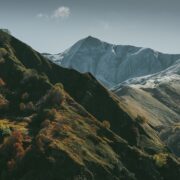


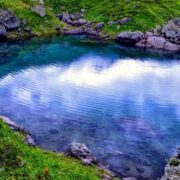








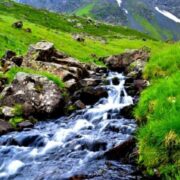


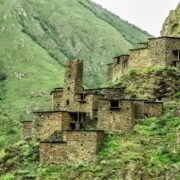







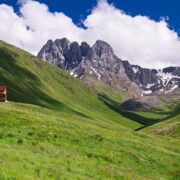

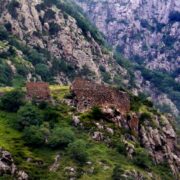
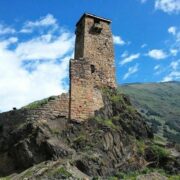




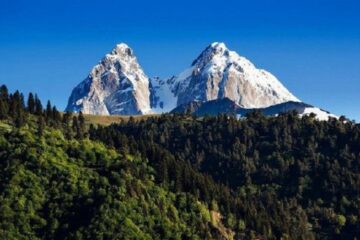
Tour Reviews
There are no reviews yet
Leave a Review